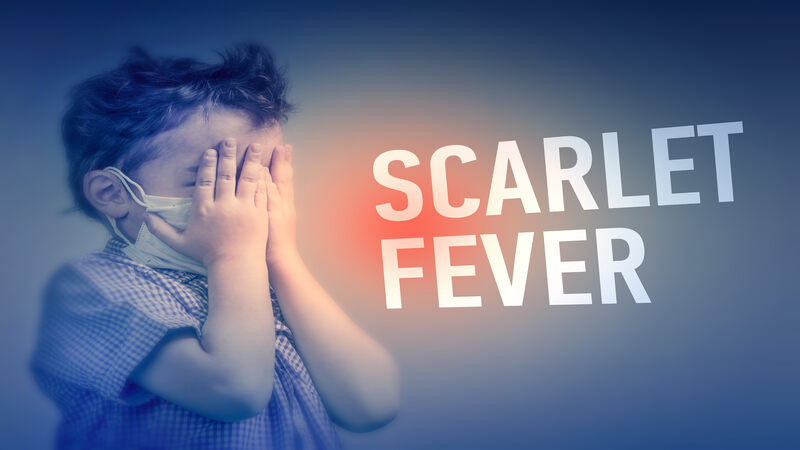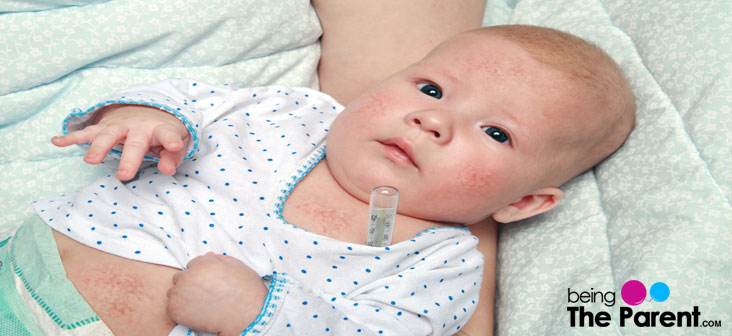
Scarlet fever once used to be the most dangerous disease of childhood. Earlier many children succumbed to scarlet fever. But today it is considered a rare illness and can be successfully treated by antibiotics and is much less dangerous than what it used to be. Babies and toddlers between the age of 2 to 10 are most susceptible to this illness. It is very uncommon in babies under two years. Read on to know all about this disease and ways to treat it.
What Is Scarlet Fever?
Scarlet fever is a contagious bacterial infection. It starts with an upper respiratory tract infection caused by a bacterium called “type – A streptococcus”. This bacterium is the same one that causes strep throat and some skin infections. The bacteria produces a toxic substance that can bring about fever and scarlet-colored rash that gives this illness its name.
Do All The Children Who Have Strep Throat Get Scarlet Fever?
No, not all kids who have strep throat develop scarlet fever. If the child is sensitive to the toxin produced by the strep bacteria, he or she will develop scarlet fever within a couple of weeks after getting strep throat.
How Do The Babies And Toddlers Get Scarlet Fever?
Scarlet fever is a highly contagious disease. The bacteria from the infected person can be spread through breathing out, coughing or sneezing. The babies and toddlers can get it when they play on these contaminated surfaces, by sharing infected utensils or toys, or even by sharing same room with the infected person. Therefore, it is very important not to send the child to daycare, nursery, or school, once he is diagnosed with scarlet fever.
What Are The Symptoms Of Scarlet Fever In Babies And Toddlers?
- The appearance of red rash is the significant symptom of scarlet fever. This mostly starts similar to a sunburn. The rash can cause itchiness. The rash generally appears first on the chest and stomach and then eventually spreads to the neck, back and rest of the body especially in the folds of underarm and elbow
- Once you press on the rash, it turns white. This differentiates scarlet rash from other rashes
- The rash starts to disappear by the sixth day of its appearance
- The skin where the rashes appear will start to peel
- Chills
- Headache
- Fever with high temperature (around 103 F)
- Loss of appetite
- Nausea
- Extreme tiredness
- During the early phase of infection, white or yellowish coating appears on the baby’s tongue
- Swollen lymph nodes around the neck
- Soreness of the throat and the tonsils appear red and swollen
How Is Scarlet Fever Diagnosed?
Once the doctor suspects scarlet fever in your baby or toddler, he can easily confirm it by performing a throat culture. It is not as complicated as it sounds. A painless swab of the baby’s throat will help to find out the bacteria that is behind the symptoms, thereby, confirming the disease. He will also look into the type of rash on your baby’s body and will examine his throat and “strawberry tongue” for changing colors.

How Is Scarlet Fever Treated?
If a doctor diagnoses that your child has scarlet fever, he would prescribe antibiotics. Usually, the antibiotic course will be for about 10 days. The antibiotics can kill the bacteria and keep them from multiplying. Even if your child feels better once the medication is administered, taking a full course of antibiotics is important to make sure that the infection doesn’t return.
Encourage the baby to have plenty of soft food. Increase the intake of fluids like soups, warm water or tea etc. which will prevent the child from getting dehydrated. If your baby is above one year, you can give honey to soothe his throat. Make your baby wear light clothes, which prevents the temperature from increasing further. Ensure the baby gets good rest throughout the treatment period.
Risks Associated With Scarlet Fever In Babies and Toddlers
If left untreated, scarlet fever can advance to more serious medical conditions. It can develop rheumatic fever, which can bring about chronic inflammation of the joints, heart and brain. Other complications include:
- Glomerulonephritis, a serious kidney disease
- Arthritis
- Pneumonia
- Skin infections
- Throat abscesses
- Ear infections
Self-Care Guidelines You Can Follow
Along with the treatment, certain measures should be taken to reduce the chances of this contagious disease spreading among other members of the family. These measures will also make sure that your child more comfortable:
- Keep the bedding and clothing items of the baby away from the clothes of other family members. Wash it separately in hot soapy water
- Ask all members of the family to wash their hands frequently, especially, the caretaker of the baby
- Clean the floor and surfaces with disinfectants
- Never mix the vessels, plates, and glasses used by the baby with the others
- You can use a cool-mist humidifier to ensure there is moisture. This will help to soothe your baby’s sore throat
- Ensure that your baby gets enough rests and drinks plenty of fluids
- To soothe the rash, you can apply calamine lotion
- In order to soothe your baby’s swollen glands, you can wrap a warm cloth or towel around this neck/ throat
- Check with your doctor if you can offer ibuprofen to provide relief from the fever
As mentioned earlier, once a deadly illness, scarlet fever is no longer dangerous. Your baby might get strep throat several times but it is very rare for him to develop scarlet fever more than once. You need to contact your doctor if your baby’s fever does not subside even after 48 hours and he develops a rash in order to get the right treatment.
Do share with us in the comments section below your experience of scarlet fever, how did you deal with it and what did you do to make your child more comfortable.

